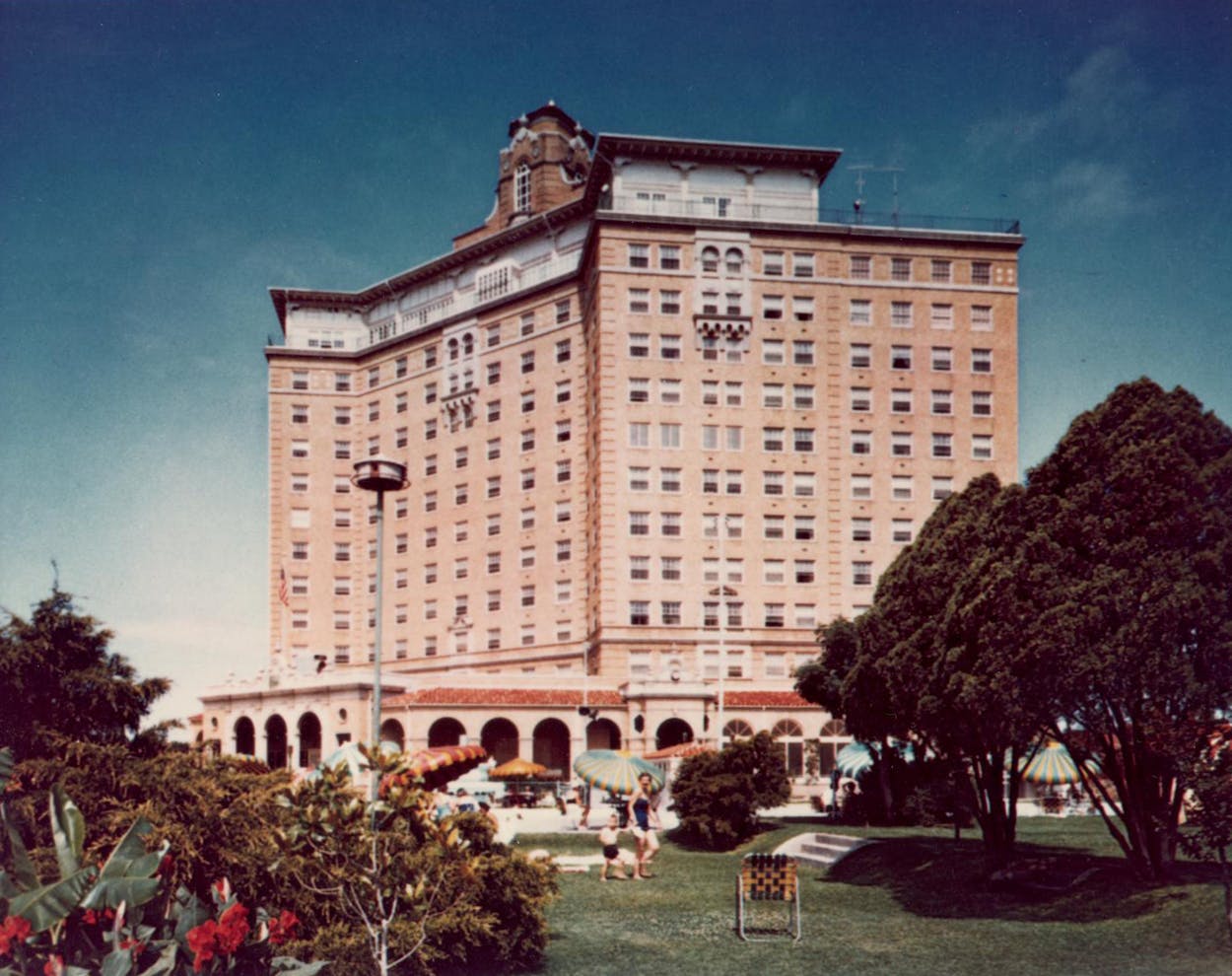For a couple generations now, the Baker Hotel has stood mostly abandoned, slowly decaying in the historic heart of Mineral Wells. The 232,000-square-foot, 14-story building towers literally and figuratively over that Palo Pinto County community, and its bizarrely outsized presence in a town of just 15,000 residents has long wowed visitors and passersby.
Yet for those same couple of generations, since the Baker closed for good 47 years ago, the people of Mineral Wells have wondered what might be if only the hotel, the crown jewel during the town’s heyday as one of Texas’s premier destination spa resorts, could be brought back to life. Could it ignite a renaissance?
They’re finally about to find out. On the steps of the grand old hotel at noon today, a pair of Southlake-based developers and an array of partners they’ve marshaled over a ten-year effort are announcing that they’ve finally secured the last of the funding needed to get a $65 million, three-year renovation project under way. Construction is set to begin soon, and if all goes according to their plans, the Baker Hotel and Spa will welcome guests again starting in 2022.
I spent some time in Mineral Wells not long ago, reporting on the long-stalled restoration efforts of lead developers Laird Fairchild and Chad Patton. They’d spent years assembling the right combination of financing and tax credits to make sense of a $65 million redo of a building that’s projected to be worth only $40 million once the renovation is complete. For the last few years, they’ve had collaborators ready to go once all the money was in place. Among these is Austin-based La Corsha Hospitality, which has been involved in other renovations of historic Texas properties, including the Driskill Hotel in Austin, Hotel Settles in Big Spring, and most recently Salado’s Stagecoach Inn.
Ahead of today’s announcement, Fairchild declined to discuss from where his group had secured the $25 million they still lacked as of earlier this year. But he was more than happy to remind me of the details of their ambitious plan.
The number of existing guest rooms (small by today’s upscale hotel standards) will be reduced from 450 to 157. More space will be devoted to twenty-thousand square feet of meeting rooms and event space, as a well as a luxury spa with the famed mineral water its star attraction. The top-floor ballroom, known as the Cloud Room, will be restored, and features commanding views of the rolling green countryside surrounding the town. The original interior will be restored wherever it can, and they’ll complement that with modern amenities and designs appropriate to the locale, looks they refer to as “Palo Pinto chic.” They expect much of the business of the reborn Baker to come from wellness-focused weekend getaways for residents of the nearby Dallas–Fort Worth area, weddings, and corporate retreats. They’re trumpeting this as “the largest restoration in Texas history of a site listed on the National Register of Historic Places.”
It’s an open question, of course, whether any of these best-laid plans work out as well as the developers and local leaders hope they will. Can Mineral Wells become again the sort of charming weekend destination that it once was, and that places like Fredericksburg (thanks to trading on its German heritage) and Waco (thanks to Chip and Joanna Gaines) have become?
When I visited last fall, I expected to write a story purely about a town stuck pegging too much of its future on its past—focusing all its hopes on a Baker revival that might jump-start a local economy that’s largely stagnated and declined in the last several decades.
Phil Garrett, the former Palo Pinto County attorney and unofficial town historian, told me then that for a long time that mind-set was predominant, but that something had changed. The people of Mineral Wells were no longer waiting on the hotel to transform their downtown. New shops and restaurants had arrived. “We’re in the middle of a renaissance right now without the Baker,” he said. “We’ve seen a burst of energy in the town that we haven’t seen in decades.”
When I asked Garrett this week about what today’s announcement means for the city he loves so much—the place his grandparents moved to in the 1920s and where he and his parents grew up—he didn’t shy away from returning to those long-held hopes for the Baker, calling its rebirth “the most significant historical event since the discovery by our town’s founder of the local mineral water in 1881.” That’s saying something, since Garrett knows his Mineral Wells history. Here’s hoping he’s right.
- More About:
- Style & Design
- Business
- Hotels
- Architecture
- Mineral Wells








